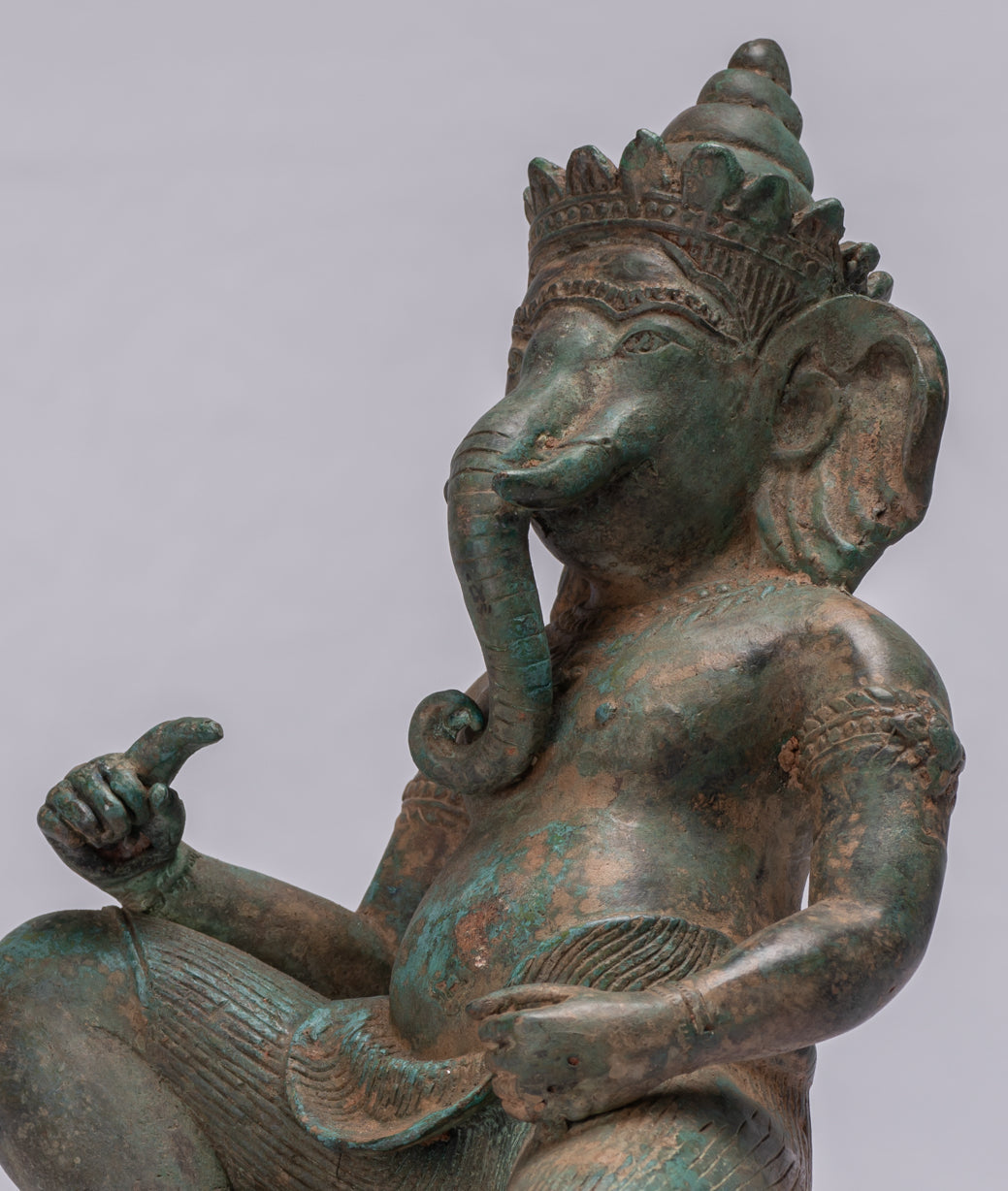
The Broken Tusk (Danta) of Lord Ganesha: Symbolism and Significance
Lord Ganesha, the beloved remover of obstacles and the god of wisdom, is often depicted with a unique feature—his broken tusk (Danta). This distinct characteristic is more than just an artistic representation; it carries profound symbolic, philosophical, and mythological significance.
The broken tusk, also called Ekdanta (meaning "One-Tusked"), is a powerful reminder of sacrifice, resilience, and the triumph of wisdom over challenges.
Mythological Stories Behind Ganesha’s Broken Tusk
Several fascinating stories in Hindu mythology explain how Lord Ganesha lost one of his tusks. Each version carries deep spiritual meaning and provides valuable lessons for devotees.
1. Writing the Mahabharata: The Power of Dedication
One of the most well-known legends comes from the epic Mahabharata, where Sage Vyasa needed a divine scribe to write down the massive epic as he dictated it. He approached Lord Ganesha, known for his intelligence, to take on this monumental task.
-
Ganesha agreed but set a condition: he would write continuously, without stopping, as long as Vyasa dictated without pause.
-
Vyasa, aware of the challenge, imposed a counter-condition: Ganesha must only write after fully understanding each verse.
-
As Vyasa recited complex verses, Ganesha’s quill suddenly broke due to the speed at which he was writing.
-
Rather than stopping, Ganesha broke off his own tusk and used it as a pen to continue his duty.
Lesson: This story symbolizes dedication, perseverance, and self-sacrifice for a greater purpose. It teaches that true wisdom often requires personal sacrifice.
2. The Battle with Parashurama: Humility & Strength
Another legend involves Parashurama, the warrior-sage and incarnation of Lord Vishnu.
-
Parashurama, a devoted follower of Lord Shiva, once visited Mount Kailash to pay his respects.
-
Ganesha, as Shiva’s son, stopped him at the entrance, stating that Shiva was meditating and could not be disturbed.
-
Enraged, Parashurama challenged Ganesha to a duel.
-
The battle was fierce, but ultimately, Parashurama hurled his mighty axe at Ganesha.
-
Since the axe was a gift from Lord Shiva, Ganesha chose to honor his father’s weapon and took the hit, allowing it to break one of his tusks.
Lesson: This story teaches humility, respect, and obedience. Ganesha demonstrated that true strength lies in wisdom and self-restraint, rather than sheer power.
3. Defeating the Demon Gajamukha: Victory Over Ego
Another myth tells of Gajamukha, a powerful demon with the head of an elephant, who became invincible due to a boon.
-
Ganesha, in his divine wisdom, battled the demon tirelessly.
-
At the peak of the fight, he broke his own tusk and used it as a weapon, ultimately defeating Gajamukha.
-
The demon, realizing his folly, surrendered and was transformed into Ganesha’s vehicle, the mouse (Mushika).
Lesson: This story signifies the triumph of wisdom over ego and the use of intellect as a weapon to conquer darkness and arrogance.
Spiritual & Symbolic Meaning of the Broken Tusk
The Ekdanta (One-Tusked) form of Ganesha carries deep spiritual meaning:
1. Sacrifice & Selflessness
-
The broken tusk symbolizes giving up personal comfort for the greater good.
-
Just as Ganesha broke his tusk to write the Mahabharata, it reminds us to put knowledge and duty before ego.
2. Overcoming Duality
-
In Hindu philosophy, tusks represent duality—good vs. bad, material vs. spiritual, joy vs. sorrow.
-
By breaking one tusk, Ganesha shows that one must transcend duality to achieve true wisdom.
3. Strength in Imperfection
-
Despite having a broken tusk, Ganesha remains the supreme symbol of wisdom and success.
-
This teaches us that imperfections do not define us—instead, our resilience and wisdom do.
4. The Power of Knowledge & Perseverance
-
Ganesha’s broken tusk is also a metaphor for the willingness to make sacrifices in pursuit of knowledge.
-
It teaches that one must endure hardships to gain true wisdom.
The Broken Tusk in Hindu Art & Iconography
In traditional Hindu iconography, Ganesha is almost always depicted with:
-
One complete tusk and one broken tusk, emphasizing the Ekdanta aspect.
-
The broken tusk held in his hand as a writing tool or a weapon.
-
His other hands holding a modak (sweet), axe, and noose, each representing aspects of wisdom and guidance.
In South Indian temples, particularly in Tamil Nadu and Karnataka, Ganesha’s Ekdanta form is worshipped separately, as it signifies a unique manifestation of divine wisdom.
Applying the Lessons of the Broken Tusk in Daily Life
Ganesha’s broken tusk is more than a myth—it is a guide for how to live wisely. Here’s how we can incorporate its teachings:
1. Embrace Imperfections
-
Just as Ganesha remained divine despite his broken tusk, we must accept that our flaws do not define our worth.
-
Instead of hiding our weaknesses, we should use them as strengths.
2. Be Ready to Make Sacrifices
-
True knowledge and success require sacrifice, patience, and discipline.
-
Whether it’s learning a new skill or achieving a goal, be prepared to give up short-term comfort for long-term wisdom.
3. Overcome Obstacles with Wisdom, Not Force
-
The Parashurama story teaches us that self-restraint is more powerful than brute strength.
-
Approach life’s challenges with calmness, intelligence, and humility, rather than aggression.
4. Focus on the Bigger Picture
-
Ganesha broke his tusk to serve a higher purpose (writing the Mahabharata)—we too should focus on what truly matters in life rather than trivial problems.
Conclusion: The Tusk as a Symbol of Wisdom & Strength
The broken tusk of Lord Ganesha is not a weakness—it is a badge of wisdom, sacrifice, and strength. It teaches us that:
-
True greatness lies in perseverance and selflessness.
-
Imperfections do not limit our potential.
-
Knowledge and wisdom require dedication and sacrifice.
By reflecting on the significance of the Ekdanta form, we can cultivate a life of humility, wisdom, and resilience, following the divine example of Lord Ganesha.


